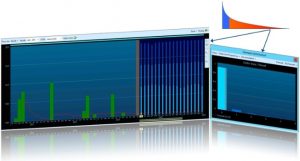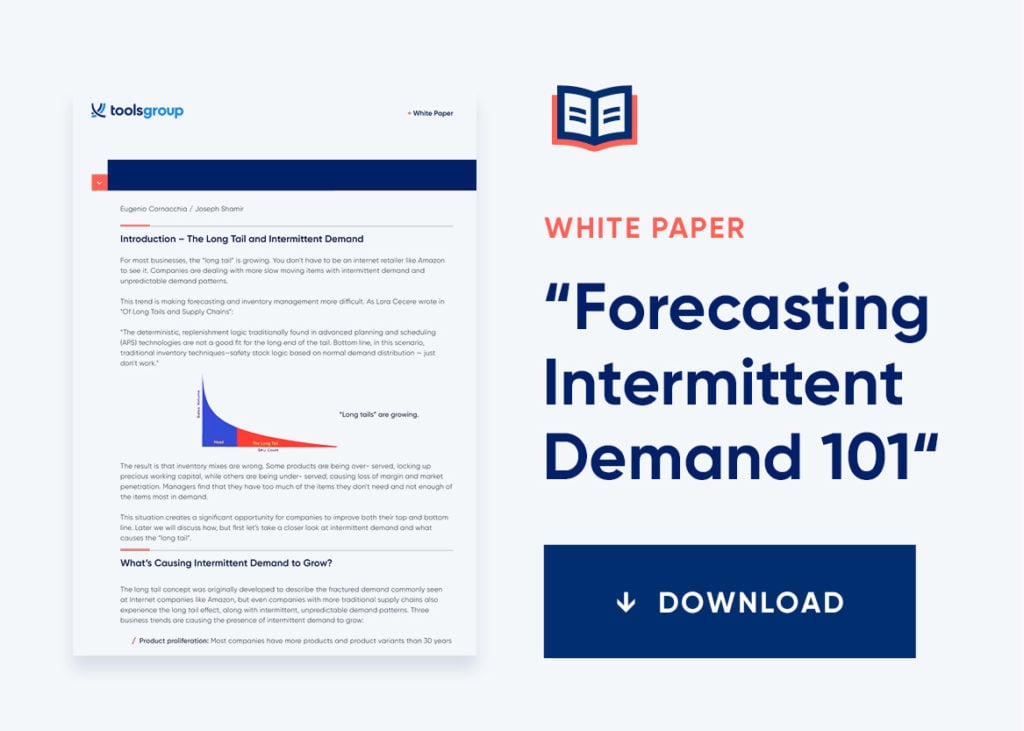Intermittent Demand is Not Unforecastable Demand
Has this happened to you? Your forecasting or demand planning system says an SKU is “unforecastable” because demand is too small and intermittent. If it happens infrequently, your intermittent demand might not be a problem. But if it’s happening regularly, it can disrupt your supply chain planning.
Why does this happen? For most businesses, the “long tail”—low-volume items with irregular demand and many zero demand periods—is growing longer. This is because several trends are disaggregating demand into smaller buckets.
- Product proliferation creates more individual SKUs, each with less individual demand, more intermittent demand, and higher demand variability
- More frequent replenishment—and more granular forecasting—leads to shorter time buckets with greater demand variability
- Increased collaboration between vendors, distributors and retailers disaggregates demand into smaller streams—where demand variability increases and slow-moving behavior is more common
Historically, the long tail was associated mostly with spares and aftermarket parts, capital goods, and project-based products. Today it reaches across all sectors—even globally branded, fast-moving consumer packaged goods companies. In one of our CPG customers—which replenishes daily—the long-tail consumes 86% of the SKUs and 46% of the revenue.
 Unfortunately, forecasting techniques that maintain safety buffers calculated using normal demand patterns found in fast moving goods can’t cut it in this scenario. Some throw up their hands and call it “unforecastable”. Others rely on “rules of thumb” to set inventory levels. Some use the Croston Method, developed in the 1970s. But this method’s exponential smoothing of average demand sizes and demand intervals does not offer a reliable way to set safety stocks or target a specific service level in situations where there is intermittent demand.
Unfortunately, forecasting techniques that maintain safety buffers calculated using normal demand patterns found in fast moving goods can’t cut it in this scenario. Some throw up their hands and call it “unforecastable”. Others rely on “rules of thumb” to set inventory levels. Some use the Croston Method, developed in the 1970s. But this method’s exponential smoothing of average demand sizes and demand intervals does not offer a reliable way to set safety stocks or target a specific service level in situations where there is intermittent demand.
All of the above practices produce inventory and safety stock targets that fall far wide of the mark. So companies get their inventory mixes wrong—some long-tail products are overserved, locking up precious working capital, while others are understocked, causing loss of margin and market penetration.
By far the best way to serve the long tail is via probabilistic (probability-based) demand forecasting. To master the long tail, you want to master the shape of its demand probability distribution across a wide variety of demand behaviors. Probabilistic forecasting and advanced analytics help create accurate demand and inventory models that support reliable service levels and stock management—without manual intervention.
- Demand modeling automatically adjusts statistical parameters across a wide range of SKU behaviors and demand uncertainties.
- Inventory modeling describes statistical inventory behavior.
- Demand signal propagation logic models the impact of replenishment policies and constraints at each echelon of the supply chain.
Together these capabilities help ensure accurate “stock-to-service modeling”—how much stock you need, the right mix, and where and when you need it to meet service level targets. A precise and robust statistical model of demand and demand variability lets you evaluate—beforehand—comparative stock-to-service curves of the inventory required to achieve various service levels for slow-moving items. You can then compare cost of inventory with service outcome—making trade-offs between working capital and delivery time to meet your goals for customer satisfaction and internal financials.
If your long-tail intermittent demand is growing, it may be time to check into probability-based demand forecasting and demand modeling.







